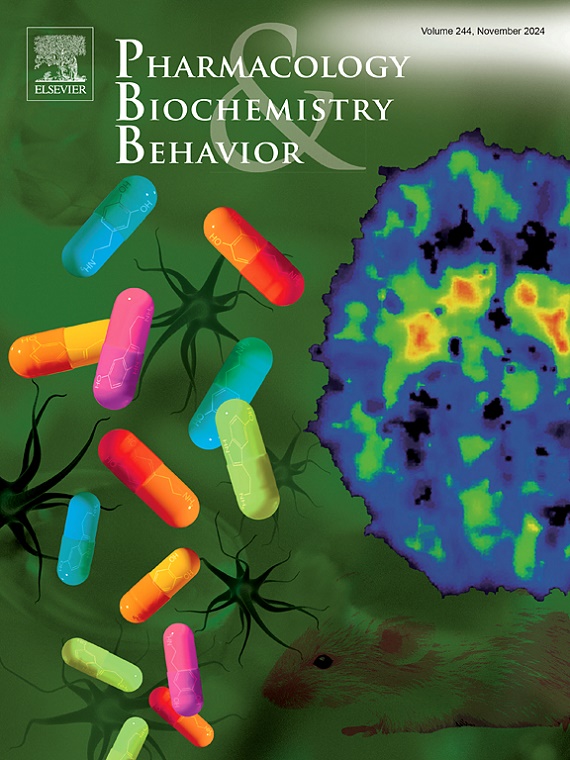Cannabidiol interactions with oxycodone analgesia in an operant orofacial cutaneous thermal pain assay following oral administration in rats
IF 3.3
3区 心理学
Q1 BEHAVIORAL SCIENCES
引用次数: 0
Abstract
Previous studies have driven the notion that the cannabis constituent cannabidiol could be an effective adjunct to opioid administration for managing pain. Most of these studies have used experimental rodents with routes of administration, such as subcutaneous and intraperitoneal, that do not correspond with the routes used in clinical practice. In response to this, we tested the ability of cannabidiol co-administration to augment opioid analgesia via the more clinically-relevant oral route of administration. To this end, male and female rats were orally gavaged with cannabidiol (25 mg/kg), oxycodone (1.4 mg/kg), or a combination of both, after which they were tested in an operant thermal orofacial pain assay in which they voluntarily exposed their faces to cutaneous thermal pain to receive a palatable reward. All three drug conditions produced analgesic effects of varying degrees, being most profound in the combination group where a statistically significant enhancement over oxycodone-induced analgesia alone was evident. Additionally, oxycodone administration decreased lick frequencies – a measure of motor coordination of rhythmic movements - which too was magnified by co-administration of cannabidiol. Together these studies provide further support of an ability of cannabidiol to augment opioid effects, particularly analgesia, when administered by a route relevant to human pain management. As such, they encourage the notion that cannabidiol could find utility as an opioid-sparing approach to treating pain.
求助全文
约1分钟内获得全文
求助全文
来源期刊
CiteScore
6.40
自引率
2.80%
发文量
122
审稿时长
38 days
期刊介绍:
Pharmacology Biochemistry & Behavior publishes original reports in the areas of pharmacology and biochemistry in which the primary emphasis and theoretical context are behavioral. Contributions may involve clinical, preclinical, or basic research. Purely biochemical or toxicology studies will not be published. Papers describing the behavioral effects of novel drugs in models of psychiatric, neurological and cognitive disorders, and central pain must include a positive control unless the paper is on a disease where such a drug is not available yet. Papers focusing on physiological processes (e.g., peripheral pain mechanisms, body temperature regulation, seizure activity) are not accepted as we would like to retain the focus of Pharmacology Biochemistry & Behavior on behavior and its interaction with the biochemistry and neurochemistry of the central nervous system. Papers describing the effects of plant materials are generally not considered, unless the active ingredients are studied, the extraction method is well described, the doses tested are known, and clear and definite experimental evidence on the mechanism of action of the active ingredients is provided.

 求助内容:
求助内容: 应助结果提醒方式:
应助结果提醒方式:


